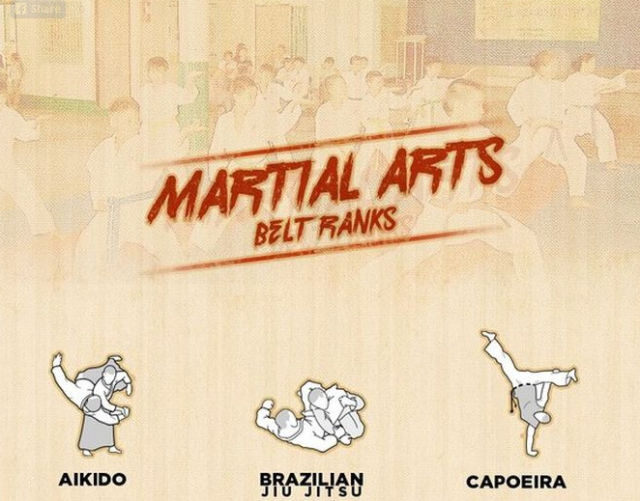Start A Fascinating Adventure Into The World Of Martial Arts, Where The Blend Of Age-Old Customizeds And Modern Performance Awaits
Start A Fascinating Adventure Into The World Of Martial Arts, Where The Blend Of Age-Old Customizeds And Modern Performance Awaits
Blog Article
Developed By-Moesgaard Francis
Enter the ancient globe where martial arts were substantiated of necessity in diverse areas. Cultures crafted special combating styles intertwined with historic contexts. Techniques developed over centuries through committed method and social exchanges. Today, contemporary martial arts mix conventional elements for maximum performance. Philosophically, martial arts highlight self-control, self-improvement, and consistency. Respect, humility, and balance are foundational principles guiding practitioners towards development and strength. Explore the midsts of this abundant background and viewpoint to reveal the profound impacts forming this long-lasting discipline.
Beginnings of Martial Arts
Fighting style originated in numerous regions all over the world, evolving as practical fight systems to defend against hazards. These old combating designs were created out of need, with each culture crafting strategies matched to their distinct environments and challenges. From the grappling arts of Jujutsu in Japan to the striking methods of Martial art in China, martial arts were deeply intertwined with the historic, social, and social material of their corresponding cultures.
In Japan, the samurai class polished martial arts like Kenjutsu, the art of the sword, which later progressed right into the much more popularized form of Kendo. At the same time, in Brazil, Capoeira emerged as a mix of dancing and combat, produced by enslaved Africans as a means to withstand oppression. Each martial art carries with it an abundant background and ideology, showing the worths and ideas of individuals that exercised them.
As you explore the beginnings of martial arts, you discover a tapestry of human ingenuity, strength, and the stubborn spirit of warriors throughout time.
Development of Methods
Through centuries of practice and improvement, combat strategies within numerous martial arts have gone through an extensive development. From ancient designs like Martial art and Karate to more modern techniques such as Brazilian Jiu-Jitsu and Krav Maga, the evolution of methods has been driven by a mix of cultural influences, functional applications, and technological developments.
One substantial element of this evolution is the cross-pollination of strategies between various martial arts. As an example, strategies from typical Japanese Jiu-Jitsu were integrated into the production of Judo by Jigoro Kano in the late 19th century. This mixing of styles has led to the advancement of crossbreed martial arts like Mixed Martial Arts (MMA), which combine elements of striking, grappling, and submission strategies.
Moreover, the development of techniques has actually been shaped by the increasing emphasis on effectiveness and efficiency in combat. Specialists have constantly sought to fine-tune their strategies through rigorous training, trial and error, and competition, resulting in the advancement of highly specialized and reliable fighting designs. Generally, why martial arts is good for kids of strategies in martial arts reflects the vibrant nature of combat and the continuous quest for renovation and technology.
Philosophical Foundations
Exploring the underlying philosophical concepts of martial arts provides insight right into their core values and assisting beliefs. At the heart of many martial arts self-controls is the concept of self-control itself. By training your body and mind to function as one natural system, you cultivate self-control that extends past the dojo or gym right into everyday life. This technique incorporates regard, humbleness, and self-constraint, shaping not just your physical abilities yet also your personality.
Another basic thoughtful structure in martial arts is the concept of constant self-improvement. sambo martial arts of understanding a martial art is endless, with professionals continuously striving to better themselves, both physically and psychologically. This concentrate on growth fosters durability, perseverance, and a growth attitude that can be put on all facets of life.
Additionally, martial arts highlight the value of consistency and balance. Strategies are designed to utilize an opponent's energy versus them, highlighting the principle of producing and rerouting pressure as opposed to fulfilling it head-on. This viewpoint encompasses social partnerships, promoting peaceful resolutions and good understanding. By welcoming these philosophical foundations, martial musicians not just improve their battle skills yet also cultivate a way of life fixated personal development, regard, and consistency.
how to fight a bully in high school , the history and ideology of martial arts use a rich tapestry of tradition, discipline, and self-improvement.
Consider example the story of Bruce Lee, who changed martial arts by mixing different styles and approaches to develop his own one-of-a-kind type of Jeet Kune Do.
Through https://www.newswire.com/news/downtown-jiu-jitsu-club-introduces-brazilian-jiu-jitsu-to-chicago-21963169 and innovation, martial artists continue to press borders and inspire others to reach their full capacity both in combat and in life.
